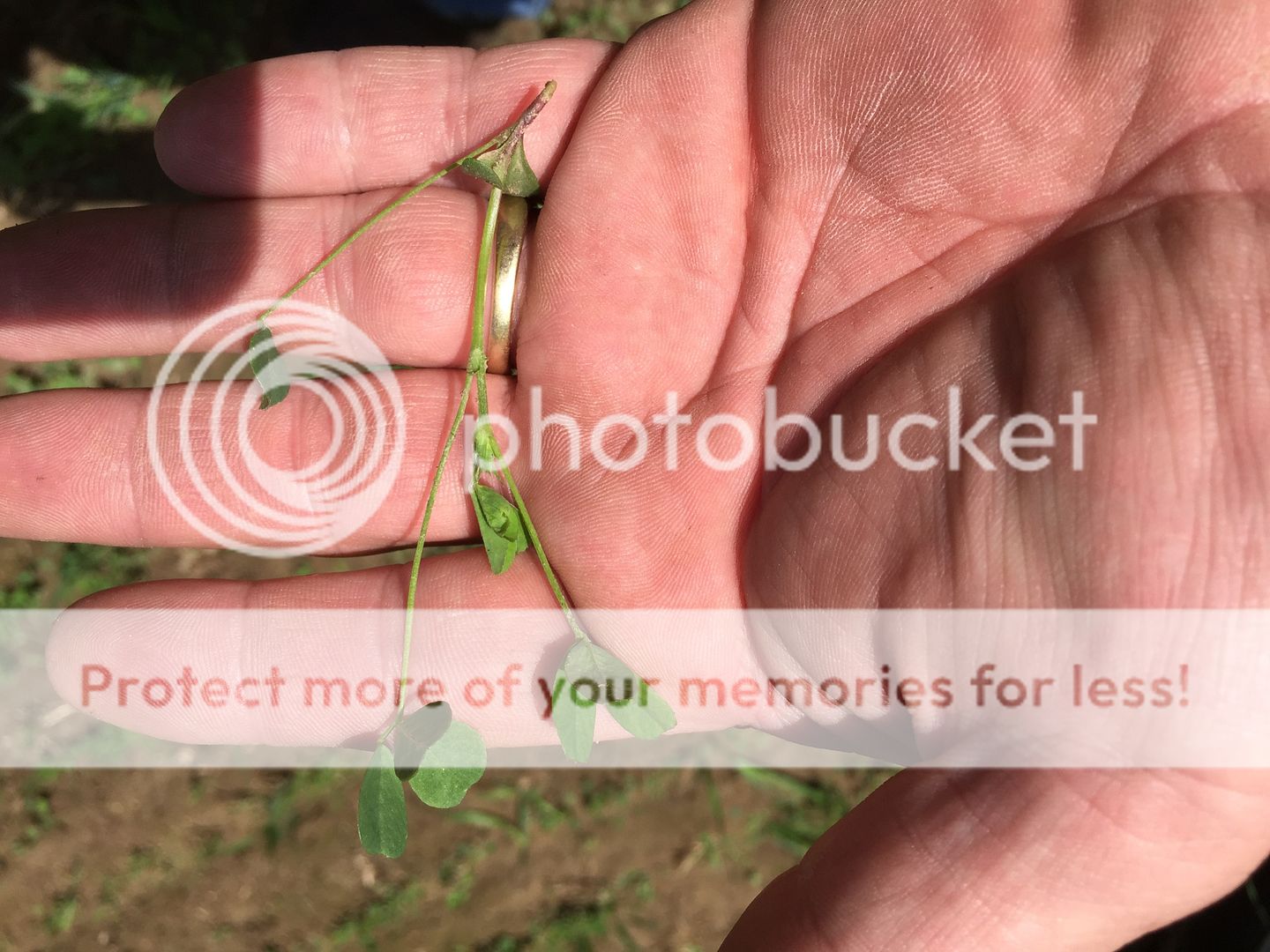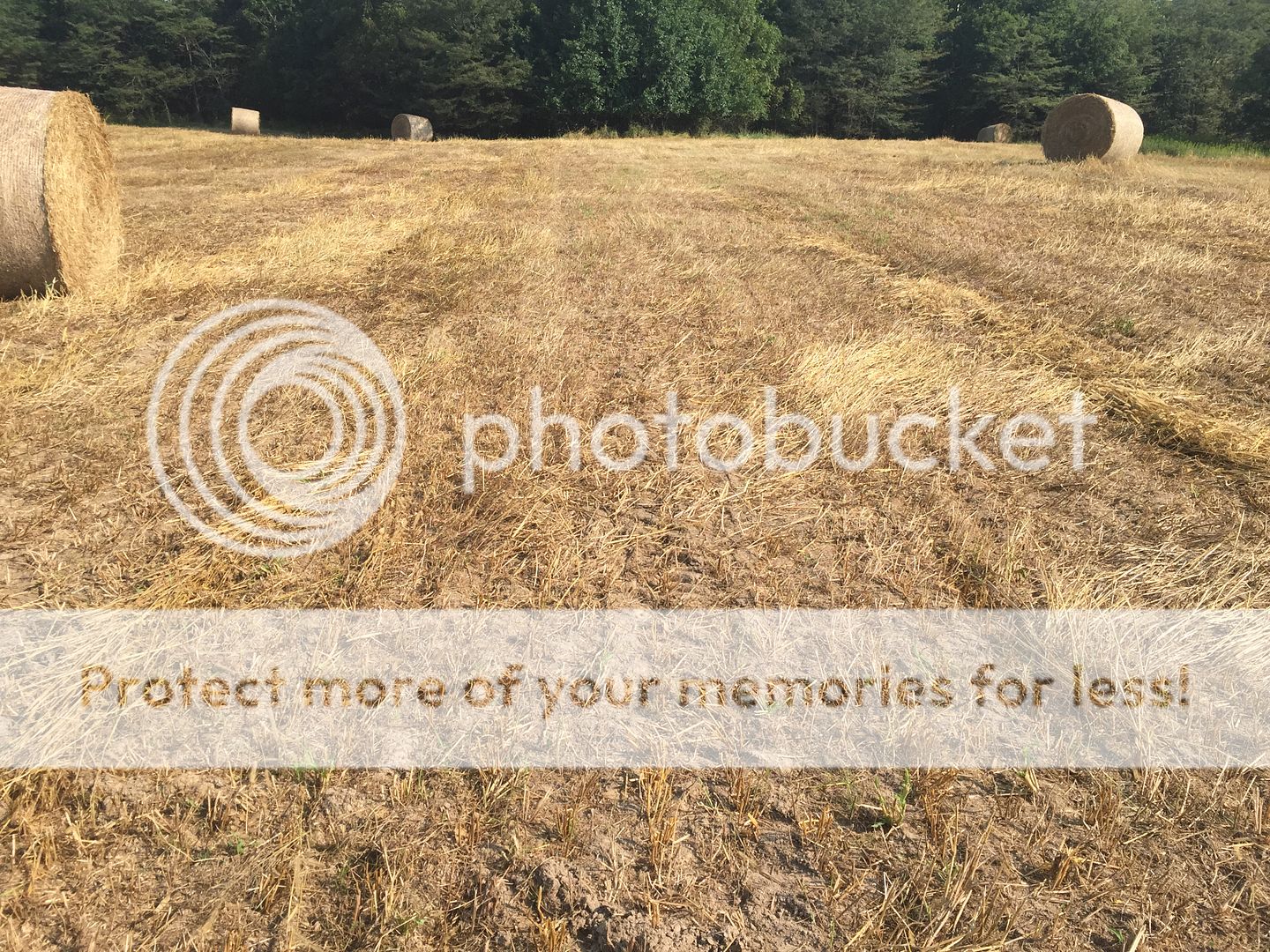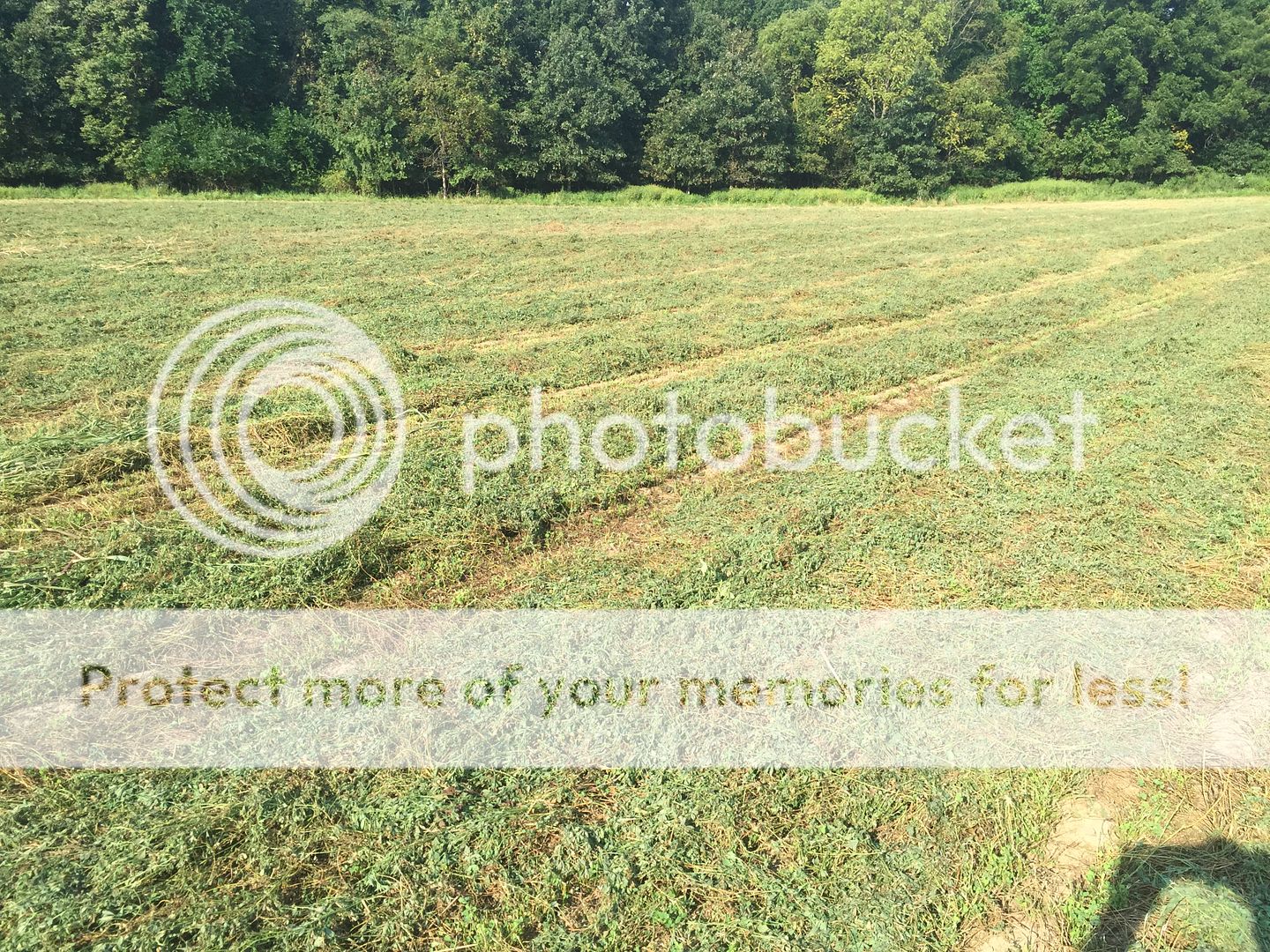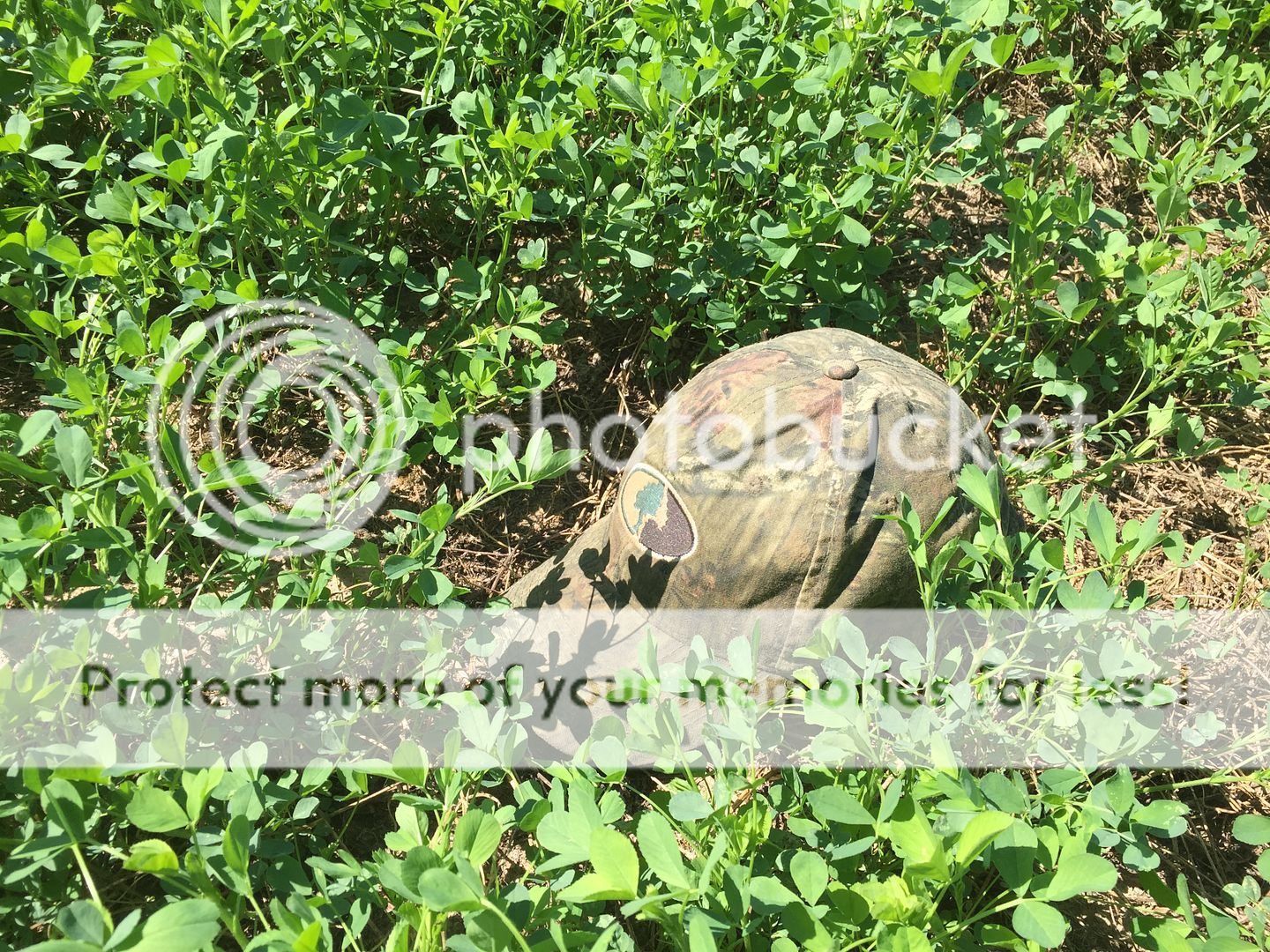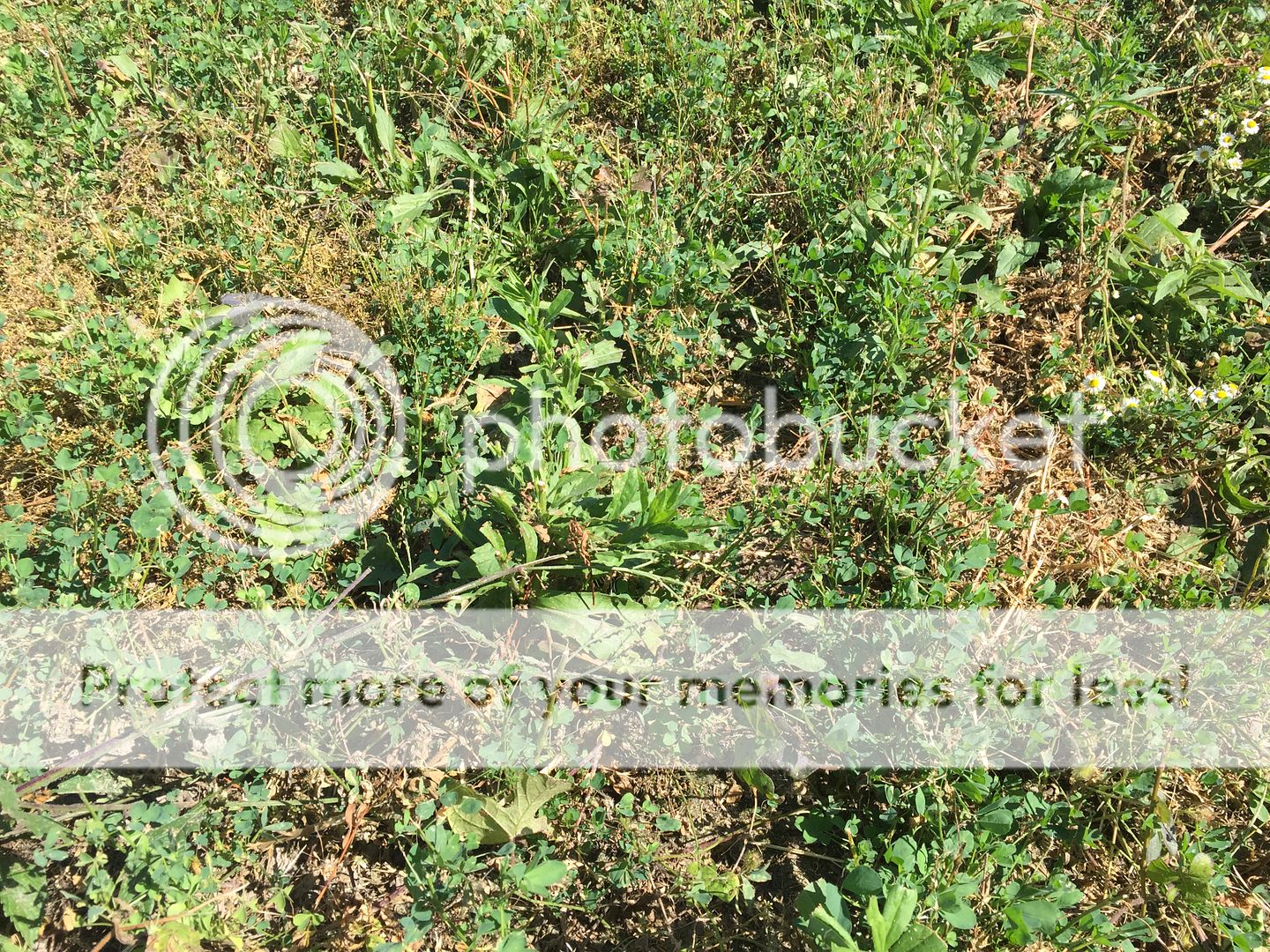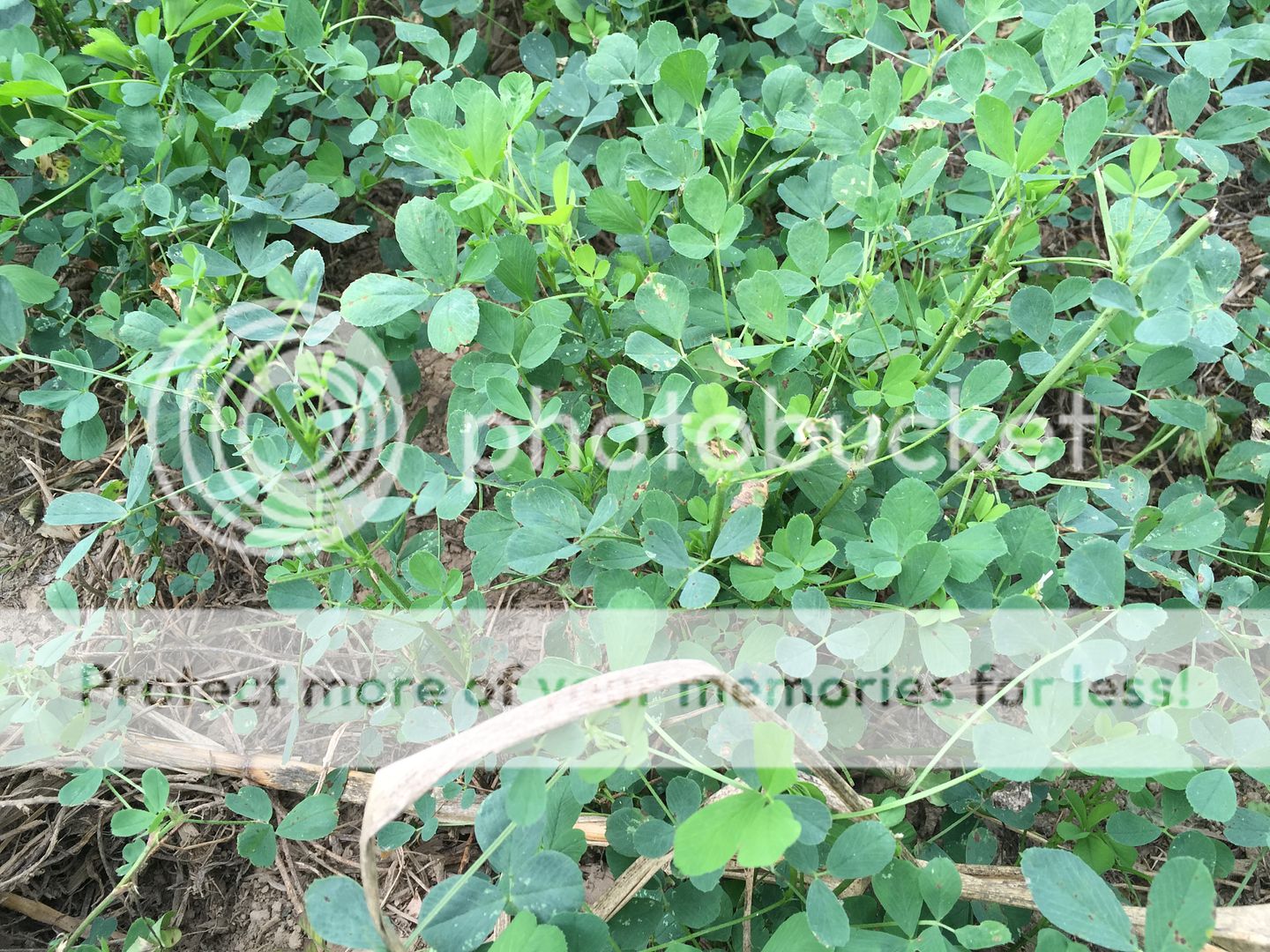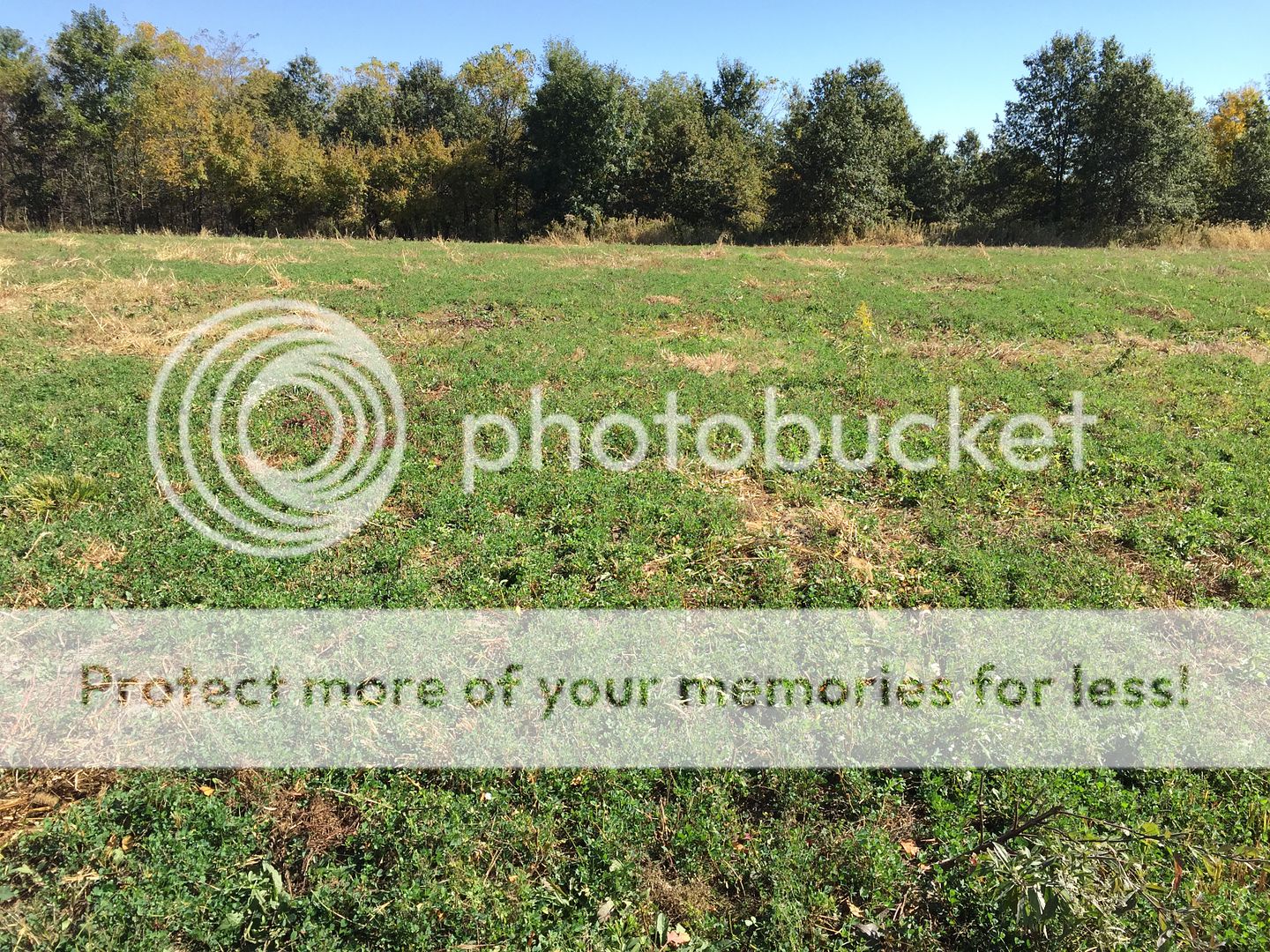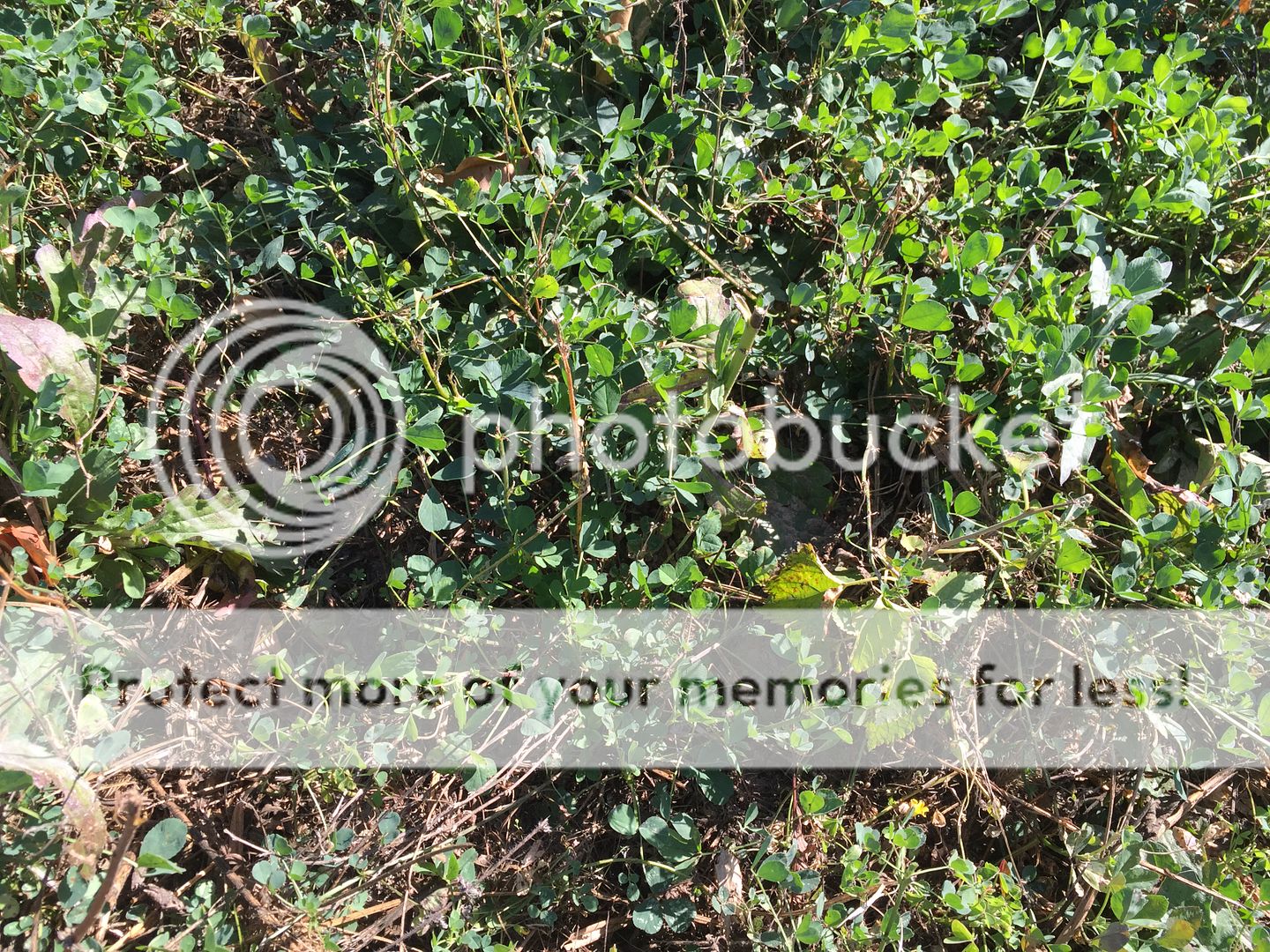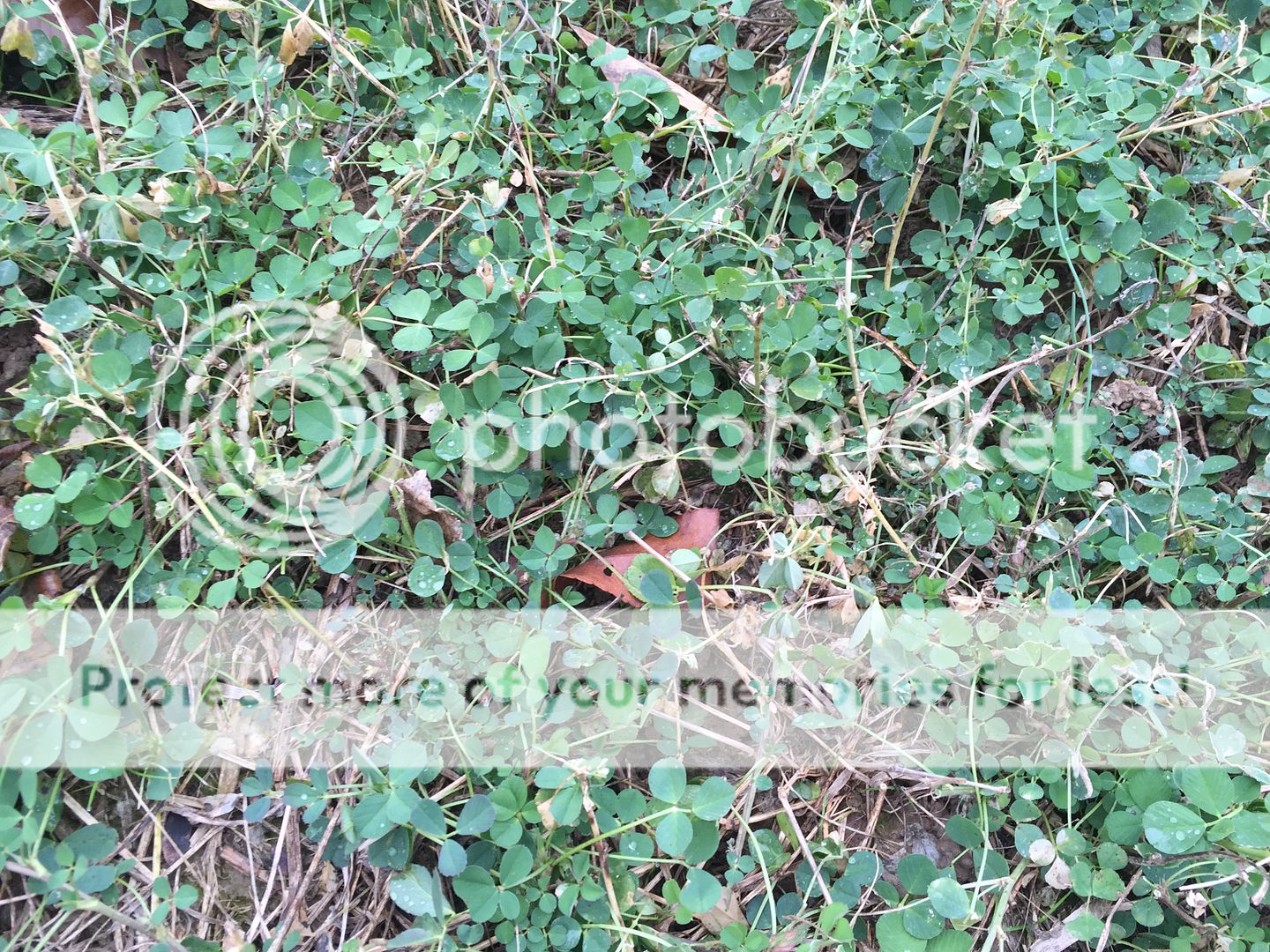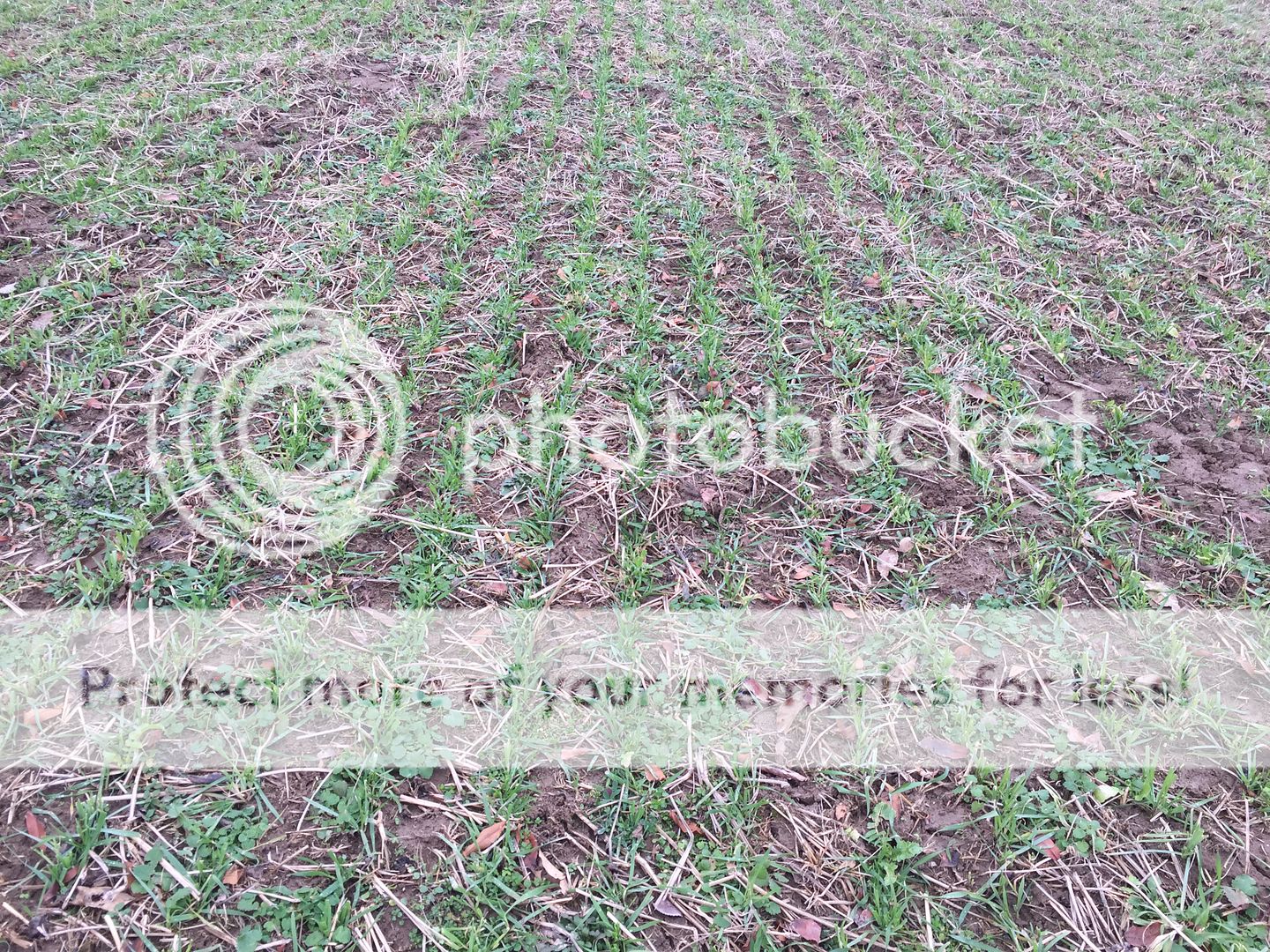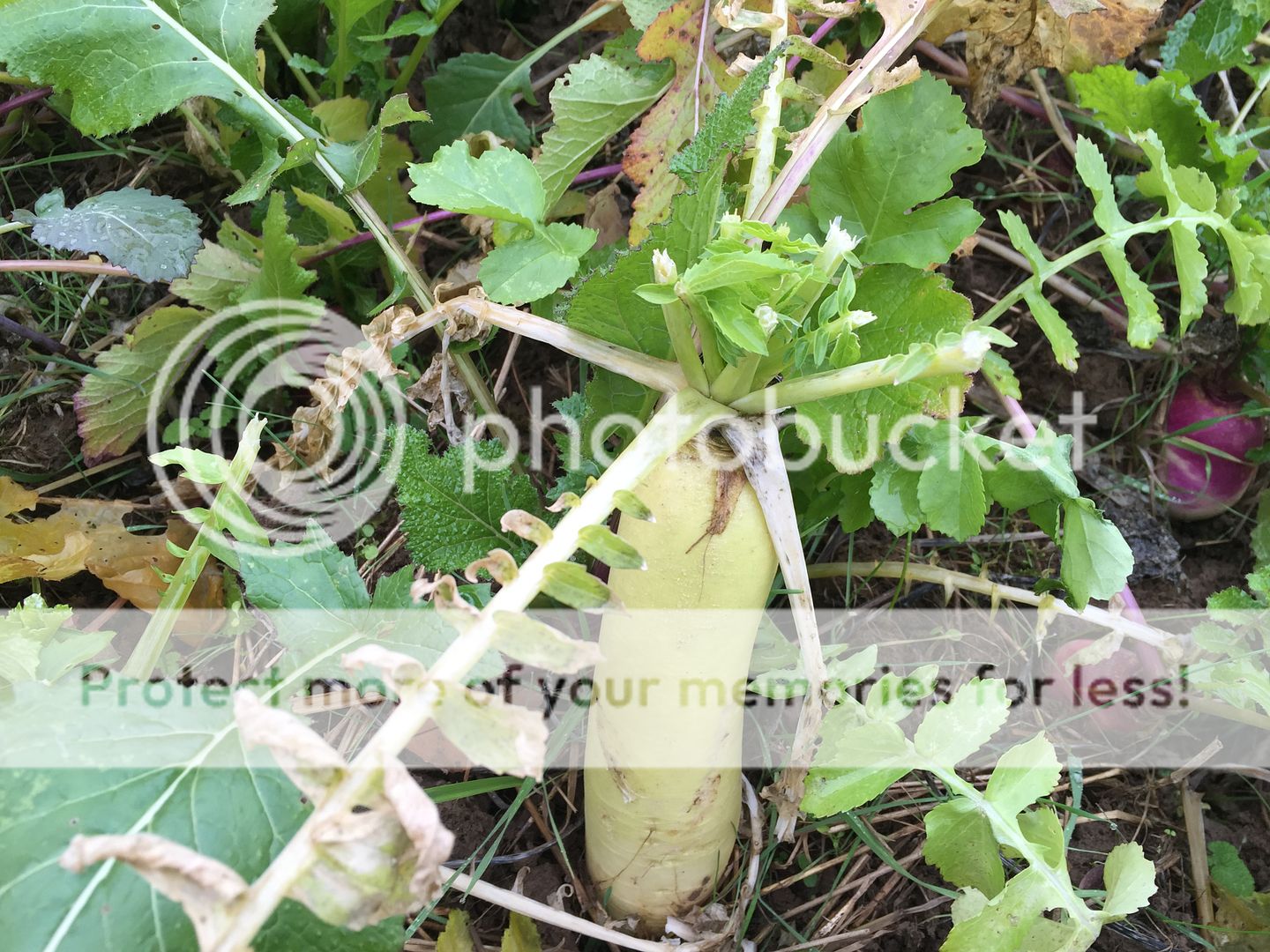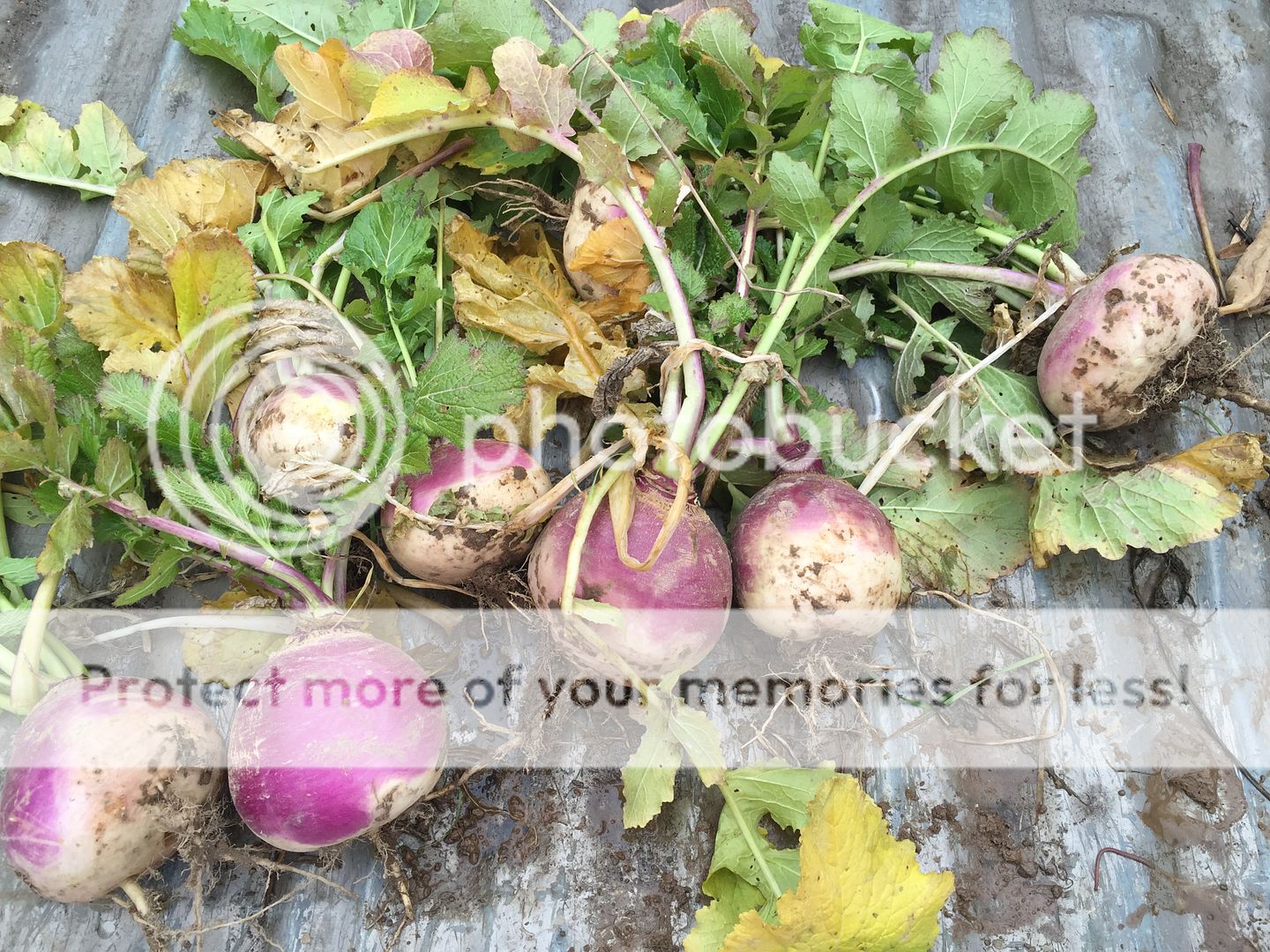Smallplot
Active Member
Check back if you want to follow the makings of an alfalfa food plot. While this is not strictly a food plot, we will be harvesting the alfalfa which will go along with the maintenance aspect also. The deer have free access to the area and every bite they take is taking away money out of the pocket. So best to manage for both and accept there are good and bad no matter what one decides.
After missing the window for getting the alfalfa planted last fall, we had to make a decision about spring planting. While not optimum it is still an option. Last fall we were able to get lime spread on some of this area. It was a maintenance application so it was not necessary to incorporate last fall. Last fall the field was planted in forage oats in hopes the oats would winter kill.
The forage oats did not winter kill and thanks to rains it has been later than optimum getting things planted.
April 18, 2015 was able to get into the field with the chisel plow and began the process.

While it would not have been necessary for tillage in a food plot setting since this area is going to be cut and baled we had to address some uneven terrain. Tillage allowed us to address some visible waves in the field for consistent cutting heights and smooth field surface.
The oats were mostly taken care of with the chisel plow and the area was left fallow for a time due to wet conditions. The depth the field was worked was approximately 5 inches. Here is a photo showing the depth the chisel was running. Keep in mind the tires will squat a bit as the points are pulled into the ground with forward momentum. But the tires will keep the chisel at a consistent depth.

On May 6th, I spread fertilizer starting early in the morning. Since this is going to be harvested I choose to apply 200 pounds of potash along with 100 pounds of DAP per acre. After the fertilizer was spread the area was tilled with the tiller and the cultipacker hooked directly to the tiller. Tillage depth was about 3 inches and what was left behind was a smooth surface.

Cont....
After missing the window for getting the alfalfa planted last fall, we had to make a decision about spring planting. While not optimum it is still an option. Last fall we were able to get lime spread on some of this area. It was a maintenance application so it was not necessary to incorporate last fall. Last fall the field was planted in forage oats in hopes the oats would winter kill.
The forage oats did not winter kill and thanks to rains it has been later than optimum getting things planted.
April 18, 2015 was able to get into the field with the chisel plow and began the process.

While it would not have been necessary for tillage in a food plot setting since this area is going to be cut and baled we had to address some uneven terrain. Tillage allowed us to address some visible waves in the field for consistent cutting heights and smooth field surface.
The oats were mostly taken care of with the chisel plow and the area was left fallow for a time due to wet conditions. The depth the field was worked was approximately 5 inches. Here is a photo showing the depth the chisel was running. Keep in mind the tires will squat a bit as the points are pulled into the ground with forward momentum. But the tires will keep the chisel at a consistent depth.

On May 6th, I spread fertilizer starting early in the morning. Since this is going to be harvested I choose to apply 200 pounds of potash along with 100 pounds of DAP per acre. After the fertilizer was spread the area was tilled with the tiller and the cultipacker hooked directly to the tiller. Tillage depth was about 3 inches and what was left behind was a smooth surface.

Cont....





